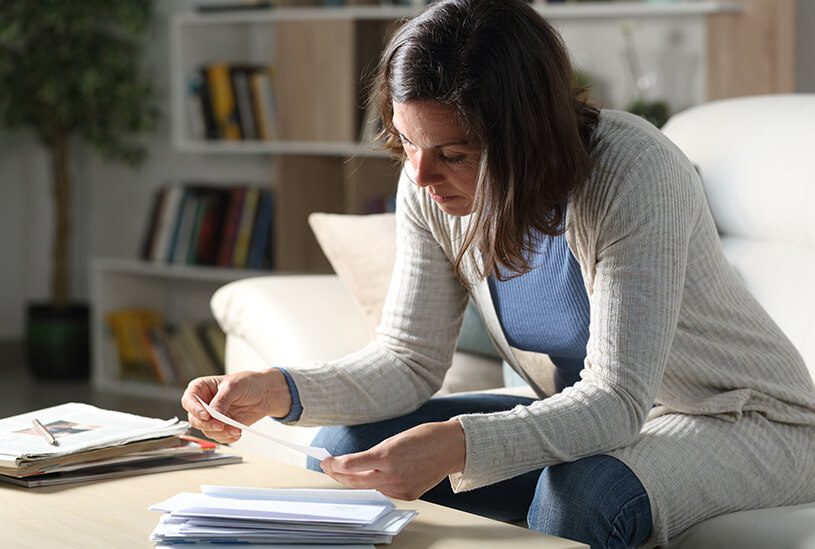The government has announced significant reforms to the welfare system, with disability allowances like Personal Independence Payments (Pip) set to change significantly.
With over 600,000 people with disabilities estimated to be self-employed in the UK, many will be wondering what it means for them. So what are the changes to Pip?
Pip news: what’s changing?
The government’s reforms to the benefits system mean the way Pip is distributed and assessed will change. There isn’t a reduction in the amount of money being paid to claimants, but a tightening of who’s eligible to receive it.
1. It’ll be more difficult to qualify for Pip
Currently, potential claimants are scored on how difficult daily tasks are on a scale from zero to 12 (zero meaning no difficulty and 12 being the most difficult), But from November 2026, you’ll need to score at least a four to qualify, whereas in the past a score of one or two might’ve been enough.
Under the current system, the following activities score below a four:
- needing prompting to prepare food
- needing help with showering or washing
- needing help with dressing the lower body
- needing help to engage with others
2. Pip reassessments will become more frequent
The government plans to reassess people receiving Pip more regularly while also scrapping Work Capability Assessments (WCA). This is to stop categorising people as ‘fit’ or ‘unfit’ to work, and instead focusing on the impact of your health on your daily life.
In the future, a Pip assessment will play a much more central role in determining someone’s disability benefit. There are also plans to increase the amount of face-to-face assessments.
How much is Pip?
The changes to Pip only apply to the daily living payment, the mobility component of Pip isn’t affected.
How much is Pip per week?
Daily living:
- standard rate of £72.65 a week
- enhanced rate of £108.55 a week
Mobility:
- standard rate of £28.70 a week
- enhanced rate of £75.75 a week
How much is Pip per month?
Daily living:
- standard rate of £290.60 a month
- enhanced rate of £434.20 a month
Mobility:
- enhanced rate of £303 a month
- standard rate of £114.80 a month
Pip payments: how will the changes affect the self-employed?
Because Pip isn’t means tested, it’s a crucial piece of support for many self-employed people as it doesn’t relate to earnings.
For many self-employed people with disabilities, there’s a chance they might not meet the new higher threshold. But the criteria of the Pip assessment isn’t changing, so if you know your previous scores, you may be able to work out how these changes will affect you.
Another detail of the reforms is the increased support the government is pledging to help people find employment. The government are planning to allocate £1 billion a year to help people find work – including self-employment.
Disability in self-employment – the key numbers
In the UK, 7.2 million people aged 16-64 are classified as disabled under the Equality Act 2010. Over half (56 per cent) of those are either employed or seeking employment.
More than 600,000 disabled people (representing 14 per cent of all disabled people in work) are self-employed, according to research by IPSE, a non-profit membership association for the self-employed. This number has increased by 30 per cent over the last five years.
Nearly half (44 per cent) of disabled self-employed people have been in self-employment for over 10 years. The key motivations for this include:
- better work conditions
- higher job satisfaction
- opportunity to earn more
IPSE’s research highlights a range of push and pull factors for disabled people to enter self-employment.
Push factors include:
- the stigma around disability and a lack of understanding in the workplace
- inflexibility when it comes to needing time off for treatment or switching to part-time hours
- inaccessible workplaces
Pull factors include:
- better work arrangements and hours
- greater fulfilment from their job
- greater flexibility to work around a disability or impairment
Why is the government changing the benefits system?
The government estimates the changes will save £5 billion a year by 2030. The reforms to disability allowance come as a part of a broader shake up of the welfare system. With Universal Credit eligibility changing too, as well as new initiatives to get more young people into the workforce.
Work and Pensions Secretary Liz Kendall said: “Millions of people have been locked out of work, and we can do better for them. Disabled people and those with health conditions who can work deserve the same choices and chances as everyone else.
“That’s why we’re introducing the most far-reaching reforms in a generation, with £1 billion a year being invested in tailored support that can be adapted to meet their changing circumstances.”
But many have been critical of the reforms, raising concerns this will impact the most vulnerable. Long-serving Labour MP Dianne Abbot, said: “I have no sympathy with the idea that the way to get people out of welfare is to cut the money they have to live on. I have no sympathy with the idea that it’s a lifestyle choice.”
More self-employed guides
- Self-employed expenses in the UK – what can you claim?
- How to write an invoice: download your free invoice template
- Small business grants: everything you need to know
- Best small business bank account – your options explained
Ready to set up your cover?
As one of the UK’s biggest business insurance providers, we specialise in public liability insurance and protect more trades than anybody else. Why not take a look now and build a quick, tailored quote?
